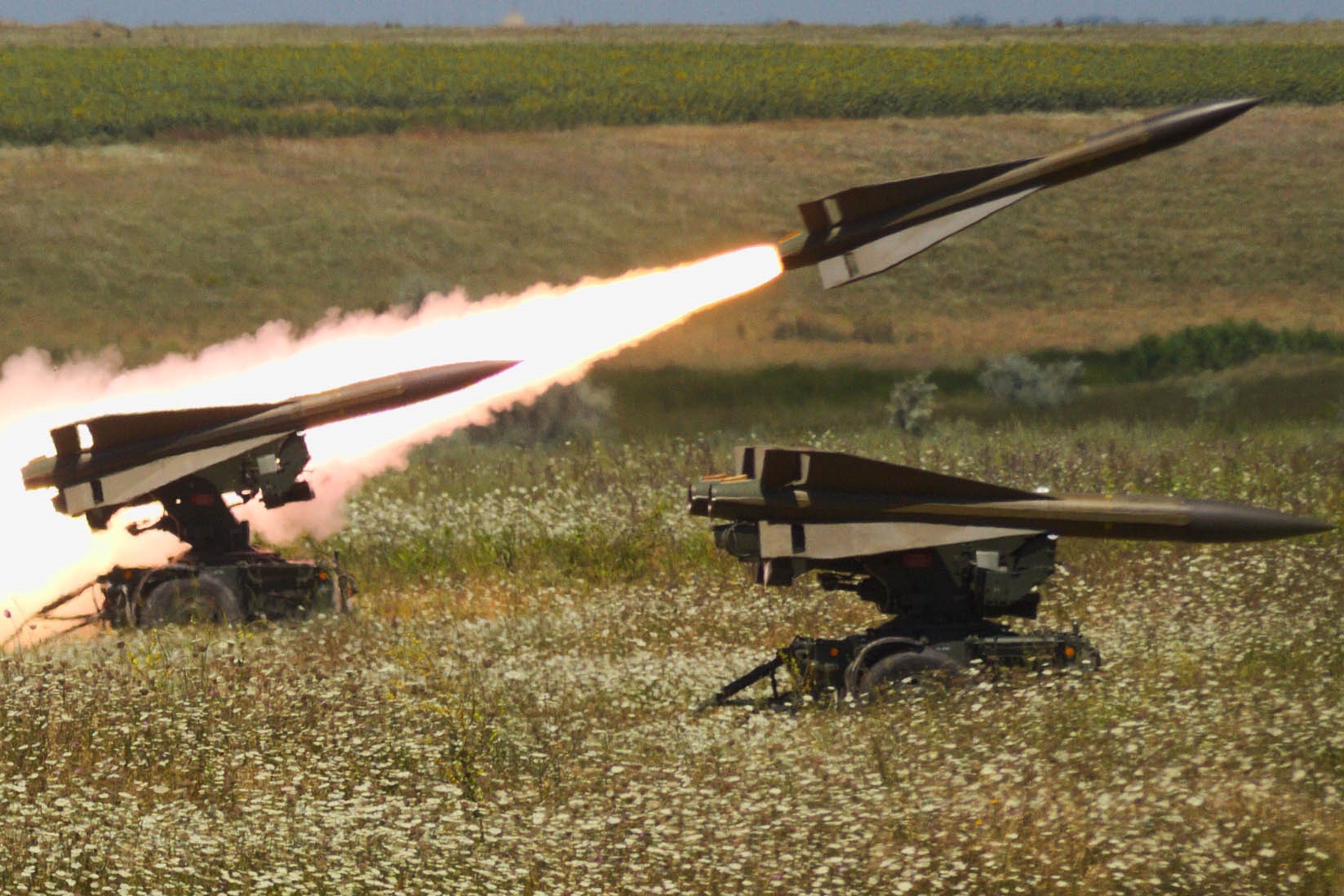 A Romanian MIM-23 HAWK missile system, photo courtesy of DoD
A Romanian MIM-23 HAWK missile system, photo courtesy of DoD
Lessons from Ukraine’s Current Air Defense Deficit
As the war in Ukraine drags on, keeping Ukraine supplied with weapons is becoming increasingly important. The most pressing example of this is currently in air defenses. In response to its dwindling missile stocks, the Kremlin has increasingly begun to import large quantities of Iranian drones, which Russia has deployed to great effect against Ukraine’s infrastructure. In response, President Zelensky has called on NATO to provide more air defense equipment. However, the United States and NATO don’t have enough equipment on hand. NATO members had neither expected nor prepared for the large-scale attritional warfare taking place in Ukraine, leading to stocks of systems and munitions becoming depleted across the alliance. Furthermore, the United States does not keep large stockpiles of some items that have become critical since February, and U.S. production capacity is also being widely outstripped by the number of systems and munitions that are going to Ukraine.
The Iranian drones that Russia purchased belong to a category of weaponry known as loitering munitions, and although they carry a relatively small payload, they are both accurate and capable of dealing significant damage. Although the attacks against infrastructure started in October, intelligence shows that Iran has provided drones to Russia since July. As of early November, Russia has succeeded in damaging or destroying 40% of Ukraine’s power infrastructure. At $20,000 per drone, they’re also relatively cheap. Even though Ukraine has become increasingly adept at countering these drones, they still exploit a major hole in Ukraine’s defenses that NATO was unprepared to counter.
While the United States and its allies have provided Ukraine with a substantial number of air defense systems, securing Ukrainian airspace remains exceedingly difficult. First, Ukraine is large, so securing the country’s airspace is inherently challenging. Second, as with other types of ammunition and systems, the United States does not have enough air defense systems on hand to fill Ukraine’s growing needs. Certain systems, such as the National Advanced Surface-to-Air Missile System (NASAMS), have already been provided to Ukraine, and more have been committed, but those will come from future production. The stocks of other systems, such as Stinger missiles, are dangerously low due to prior transfers. Third, some systems, such as the U.S. Patriot system, are too complicated to be provided to Ukraine in the short term.
This is not to say that NATO cannot continue to aid Ukraine. The United States still has some systems that it can provide, such as the HAWK system. Spain has already given Ukraine multiple HAWK systems, and the U.S. is providing HAWK missiles. However, the missiles need to be refurbished first. The United States will also provide Avenger systems, but the Avenger system uses Stinger missiles, and the United States has already depleted those stocks. Germany has also provided one of its IRIS-T systems and committed three more, but those will only arrive sometime next year.
Beyond matériel donations, there are other ways to blunt Russia’s offensive airborne capabilities. Firstly, many of the components used by Iran to manufacture drones come from American and Japanese firms. While it won’t have an immediate effect, the United States should restrict Iranian and Russian access to these components, especially those not currently export controlled. Secondly, the United States needs to focus its attention on helping Ukraine manage and repair the damage to its energy infrastructure. This will involve providing Ukraine with the technical components for infrastructure repairs and humanitarian aid to prevent mass suffering. The State Department announced an additional $53 million infrastructure aid package on November 29, and this focus will need to be maintained throughout the winter. While not ideal solutions in comparison to fully securing Ukrainian airspace, measures like these can help bridge the gap between current needs and what NATO can provide.
Problems like this will continue as the war continues. This is especially true since Russia, despite sanctions and setbacks, continues to fight and adapt. However, while air defenses are the most acute need now, that won’t remain true. Ukraine’s needs will change as the war proceeds and the situation on the ground evolves. While the intensity of fighting will likely slow during the winter, a Ukrainian spring offensive would likely bring new needs, such as main battle tanks, something Ukraine has already asked for repeatedly. While it’s unclear if NATO would be willing to supply Ukraine with modern tanks, offensive weaponry and systems would still be called for. Some possible solutions to these issues, such as restricting drone component exports, take time before they become effective, and while Ukraine’s need for technical humanitarian help is starting to gain attention, the attacks on infrastructure started in early October. The United States and its allies therefore need to anticipate needs before they become acute and then identify hurdles and solutions in advance.





